We all want to hire the best people for our organisations and do so whilst also improving the diversity within the organisation. A more diverse staff has been shown to improve problem solving, raise revenues and open new opportunities and markets to organisations all over the world.
Creating a more diverse and inclusive workforce can feel like it is mandated and lead to other issues if managed incorrectly. That’s why it’s important to do this with strategies that not only work but bring the whole organisation to understand the strategy.
Blind recruitment is widely regarded as one of the most effective ways to increase diversity and equally remove bias from recruitment.
In this guide you will learn more about blind recruitment, bias in recruitment, how blind recruitment works and its associated benefits.
What is blind recruitment?
Blind recruitment is defined as “the process of removing any and all identification details from your candidates’ resumes and applications. It helps your hiring team evaluate people on their skills and experience instead of factors that can lead to biassed decisions.”
By removing the elements which cause unconscious bias such as, gender, race, age, religion, disability and sexual orientation at the application stage, you are creating a wider recruitment pool to select candidates from. Software can automatically redact information and stop the screeners in human resources from making the kinds of decisions that create this unconscious bias.
Blind recruitment helps hiring teams assess applicants exclusively on their suitability for the position and reduces the risk of conscious and unconscious bias.
Bias in recruitment
We have all been responsible for allowing our biases to take control of our decision making at some point in our lives. Whilst this may be ok for choosing a dessert on a menu it’s not the best strategy when you’re looking to build the best possible team for your organisation.
Bias in recruitment can be rather destructive and limit your pool of potential candidates.
Broadly speaking, unconscious bias is a term that describes any implicit preferences or prejudices that can affect how we judge a person’s skills, abilities or character.
There are of course different types of bias and this includes:
- Confirmation bias
Confirmation bias means you only take in information that confirms your beliefs and ignore everything else.
- Affinity bias
This is where you identify with a candidate based on a similar or likeable trait, so you act warmer towards them during the interview and speak better of them afterward.
- Similarity bias (Ingroup bias)
Similarity bias means you want to hire those most like you (same group interests or hobbies, etc.).
- Projection bias
You believe that others share your own goals, beliefs, etc., and so you think they’d be suitable for the company you are hiring for.
- Halo effect
The halo effect is where you think that since the person is good at A, they will also be good at B, C, and D.
- Pitchfork effect
A decision-maker unconsciously allows one negative detail or trait about a person to affect, influence, or guide their overall decision about that person.
- Status quo bias
This is an emotional bias; a preference for the maintenance of one's current or previous state of affairs, or a preference to not undertake any action to change this current or previous state.
- Nonverbal bias
When people exhibit relatively negative (less positive) nonverbal behaviour toward specific social groups. Nonverbal behaviour is different from actions and verbal behaviour.
We’ve seen the different types of bias but how can they affect the workplace and recruitment?
- Research has shown that a diverse workplace is more effective, and a diverse organisation performs better. However a bias can affect the level of diversity in the workplace and impact on these very benefits.
- Bias can result in people recruited into roles for which they aren’t suited.
- You’ve chosen someone (based on whatever bias unintentionally) but haven’t really evaluated their skills or if they can complete the job. This can cause longer term issues overall.
- Bias can result in highly talented candidates being discounted.
- You’re not really hiring the best talent, you're hiring who you thought was the best talent.
- Unconscious bias can cost your business more time and money.
- All of the previous examples highlight another key issue, that is that unconscious bias can end up resulting in higher costs and more time taken away from your day-to-day.
How blind recruitment works
Blind recruitment refers to the removal of identifying elements from resumes, applications and assessments throughout the recruitment process. These elements include: name, age, gender, race, location, image and other identifying data.
The case for using ‘blind CVs’ is growing in popularity. A blind CV is essentially one that doesn’t include any personal details which refer to the applicant’s gender, age or ethnicity. In general, the idea is that any information unrelated to a person’s work capabilities, shouldn’t be included. Blind resumes or CVs are sometimes called redacted resumes or anonymous resumes.
Here are some examples of how blind recruiting can address issues in the hiring process:
- Candidates with Muslim-sounding names are three times more likely to be passed over for jobs.
- In a study for the department of works and pensions, nearly twice as many applications with Indian-sounding names had to be sent for the same level of successful outcomes as for applications with White-sounding names.
- In another study by the DWP ethnic minority applicants were discriminated against in favour of white applicants in 29% of cases.
- In a study by the National Bureau of Economic Research, resumes with Black-sounding names are 50% less likely to receive a callback for an interview than those with White-sounding names.
- In this study, a candidate with a Turkish-sounding name that wore a headscarf had to send 4.5 times as many applications as an identical applicant with a German-sounding name and no headscarf to receive the same number of callbacks for an interview.
- Research from PwC shows that 1 in 5 women experience gender discrimination in recruitment.
In order to address the issues raised, blind recruitment has been shown to best manage this, and implementing blind recruitment processes involve the following:
- Educating staff, especially managers, about how to recognise and overcome their unconscious bias.
- Use applicant tracking systems that can automatically hide identifying information.
- Have identifying information manually redacted by independent personnel outside the hiring team.
- Use practical online tests – related to the job that the candidate would be doing – to help gauge their skills objectively before inviting them in for a face-to-face meeting.
Benefits of blind recruitment
If you google, “the Benefits of Blind Recruitment” you will find many studies and evidence which clearly highlights all the different ways that blind recruitment can help make the workplace better but also, more profitable.
For example, if an organisation was trying to show its equal rights policy, then a study like this one clearly demonstrates the power of blind recruitment. In this particular case, an orchestra ran blind auditions and found the probability a woman will be advanced out of certain preliminary rounds is increased by 50%, as well as enhancing by “several fold” the likelihood a female contestant will be the winner in the final round when using blind screening.
The main benefits of and advantages as provided by blind recruitment include:
- Boost the employer brand by public commitment to diverse recruitment.
- Establish a more valuably diverse workforce.
- Helps recruiters focus on what’s required for the role and avoid their unconscious biases.
- Companies with 30 or more female executives are more likely to outperform those organisations who have 10 to 20 female executives.
- Cognitively diverse teams solve problems faster than teams of cognitively similar people, according to 2017 research published in Harvard Business Review.
- Establish a level playing field to attract more diverse applicants.
- New hires are based entirely on their objectively assessed suitability for a role.
- Focusing purely on the skills and capabilities of applicants raises the overall potential of the workforce.
- Blind hiring entirely eliminates nepotism and the ‘who do you know’ culture that can undermine recruitment processes.
However, there are some disadvantages when it comes to blind recruitment and these include:
- Not all blind recruitment is the same and not all industries can take this on board. There are, as with everything, limitations.
- Studies from Harvard Business Review have shown that total blind recruitment (which is all details redacted bar skills) only increases diversity by 4% whilst another study from Yale university said that there was a 7% drop of diversity in specific creative industries.
- It may lengthen your hiring process – if you don’t use an ATS that can hide applicants’ personal information automatically, someone will need to do this manually.
- It fails to address diversity and bias problems elsewhere in the organisation, nor those around reward and promotion decisions.
Conclusion
We all want to hire the best people for our organisations and having a more diverse team allows organisations to automatically create this environment. Blind recruitment is the best known strategy to date that removes bias from the recruitment process and allows organisations to focus on hiring the best talent regardless of the traditional things that can hold up creating a better and more diverse workforce.
The Thomas Recruitment Platform is an advanced piece of software that can help with your recruitment needs and works to help organisations manage a blind recruitment process.




